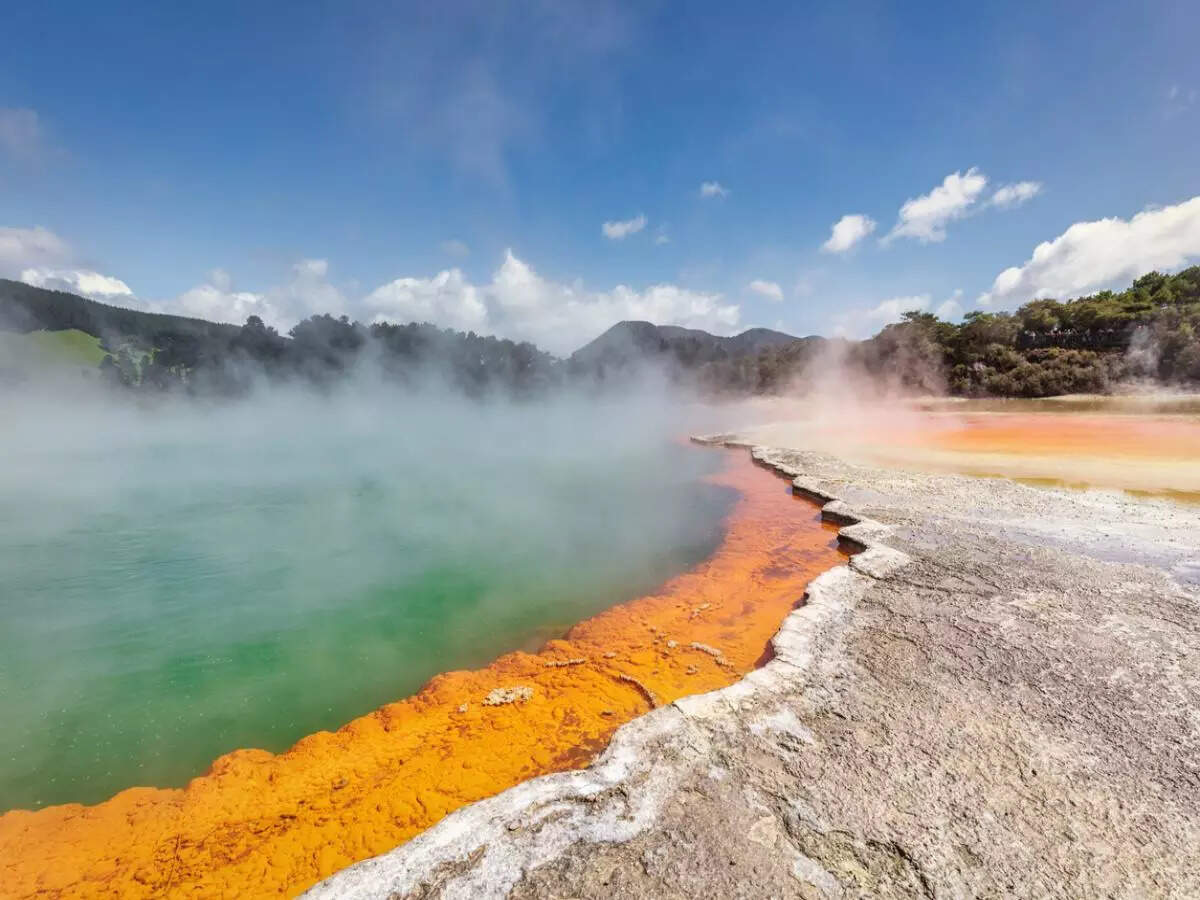
Introduction:
- Scientists have made a significant discovery of a concealed hydrothermal system beneath the waters of Lake Rotorua, situated atop a dormant volcanic crater on New Zealand’s North Island.
- This revelation not only adds a new dimension to the lake’s rich history but also represents a milestone in understanding subterranean geological phenomena.
Lake Rotorua’s Geothermal Wonders:
- Lake Rotorua is renowned for its geothermal features such as bubbling mud pools, natural hot springs, and geysers, reflecting the Earth’s fiery energy.
- Despite its remarkable geothermal activity, the lake’s bottom temperature remains relatively cool, with an average depth of around 10 meters, as it is part of the Taupo Volcanic Zone formed by a collapsed magma chamber.
Scientific Exploration and Mapping:
- Researchers from GNS Science, a New Zealand research institute, mapped approximately 68% of Lake Rotorua’s surface area spanning 55 square kilometers.
- Utilizing advanced multibeam echo sounder technology and magnetic surveys, the team discovered eruption craters, remnants of ancient rivers, and a significant magnetic anomaly in the southern part of the lake.
Validation of Submerged Hydrothermal Activity:
- The discoveries validate that the known hydrothermal activity on land extends into the submerged domain of Lake Rotorua, marking a first-time revelation.
- The magnetic anomaly, attributed to the alteration of magnetite into pyrite due to hydrothermal fluids, indicates a distinctive subaquatic geothermal phenomenon.
Insights from Detailed Mapping:
- Cornel de Ronde, a leading scientist at GNS Science, likened the clarity of the maps to the experience of seeing clearly with glasses for the first time.
- The detailed imagery reveals a vivid underwater landscape with warmth ascending from hot water, and hydrothermal eruption craters dotting the lake’s floor.
Maintaining Cool Temperatures:
- Despite significant geothermal activity, Lake Rotorua maintains a relatively cool temperature near its bottom, averaging around 14 degrees Celsius.
- The lake’s extensive volume facilitates efficient dispersal of heat, ensuring a consistently stable temperature with minimal fluctuations.
Continued Exploration and Mysteries Unveiled:
- As researchers continue to analyze the data, further mysteries of Lake Rotorua’s submerged world are anticipated, enriching our understanding of the intricate interaction among land, water, and subterranean forces.



